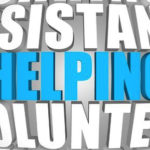LinkedIn is, by far, the number one social network geared strictly towards business professionals. While it is a great place to network, meet people, and find jobs, it is also your electronic resume. What users need to understand is that it is more than a business networking site. Your LinkedIn profile can go a long way towards giving you an edge in your job search. On the same note, it can also kill it if you aren’t using it correctly.
First and foremost, in today’s day and age, You need to be on LinkedIn if you are in the job market. It is an incredibly powerful business networking tool that will help you connect to so many hiring managers in different types of industries.
Before you connect to them, you will need to do some preparation in regards to your profile.
Does Your Resume Match Your Profile?
If you are in the job market, you will likely be sending resumes out. Once a hiring manager lands on your profile, he/she may check the LinkedIn version of your resume and compare it to the one that you sent. Do they match?
It is simply amazing how many candidates’ LinkedIn profiles do not match their resumes! As a recruiter, when I saw discrepancies, I tossed out the candidate. If you have a LinkedIn profile, make sure jobs, dates, job descriptions, and education information match up to whatever you write on your resume.
Also, post your picture in your profile. It matters, and is part of your personal brand. Show that you are aware of and care about your online image.
Do You Have Recommendations?
The most important thing I look at on LinkedIn is the person’s recommendations. If you are in the job market, the single most important thing you can do with your LinkedIn profile is to have several glowing recommendations.
Yes, it is true that most people only ask people for endorsements if they know they will say good things. This is the same rule that applies when you list references in your resume. Still, it is good to know that someone holds the candidate in high regard.
In the days before LinkedIn, employers checked references after a job interview. Today, with LinkedIn, references may be part of the decision to even bring a candidate in for a job interview.
Many LinkedIn users have recommendations on their profile. If I have ten great resumes in my hand but only plan to call in five for interviews, I will check your LinkedIn profile. If you are one without recommendations and seven others have great ones, that is a huge plus for them and a huge minus for you and will likely eliminate you.
Alternatively, if you have 15 recommendations from coworkers on your LinkedIn profile and another candidate has four, but two of them are from people who managed them, that gives them an edge over you.
Are Your Recommendations From the Right People?
Recommendations from people who have managed (or taught) you, directly or indirectly, carry more weight than 10 coworkers’ recommendations. Hiring managers know that these recommendations could be from 10 of your closest friends. Hiring managers want to hear from people who have managed you in the past.
The job titles of the people who endorse you matter as well. Try for a good mix (managers, coworkers, clients) but keep in mind that higher level employee endorsements are stronger endorsements.
Realistically, you really only need three to five recommendations (as long as you have one or two manager recommendations in there). Ideally, two to three recommendations per job is sufficient. You should probably go back about 5-10 years.
Do You Talk on LinkedIn?
Are you active on LinkedIn? Do you post updates on yourself? Are you answering questions for others and participating in group discussions?
This is key if you want to break into a new industry. Participating in groups and answering questions for others is a great way to network with others and build relationships. Seek out the type of contacts you want to make, join groups, and start talking to them. Or be a person who asks questions. Once you build up a rapport with a future job potential, you will have an “in” to connect with him/her and talk about possible opportunities for you.
But, be careful with this! Do not just get into conversations if you do not know what you are talking about! Not only will it kill your chances with that person but now your content is “out there” for anyone to see! Make sure what you say is true and helpful. You can discredit yourself if you don’t and you can leverage yourself if you do.
Use the Applications!
You can link your blog to your LinkedIn profile. If you want to get into a new field, learn as much as you can and blog about it. This is your chance to show off what you know! Attach your blog to your profile and voila! People who are considering you for possible employment will see this when they land on your profile.
If I came across a rather impressive but “unqualified” candidate and the person mentioned they had spent time learning the field on their own and mentioned this blog in their cover letter, I will likely go look at it.
If you are writing high level content, I will be very impressed! The fact that you know things about a field you aren’t in shows you have tremendous self motivation. Hiring managers love that.
Remember: all content that is visible online should be at a very high level. It can really boost your chances of getting an interview or getting a job. The opposite is true as well.
Are you reading some great books? Attach them to your profile! You can put events you are attending on there as well. Surf through the applications and anything that you feel might add value to your profile? Add it!
LinkedIn is a great way to show your knowledge in other fields of interest. When using it, just be sure you are honest, have some glowing recommendations, and are participating intelligently. If you do these things, LinkedIn can be the magic key in your job search.











